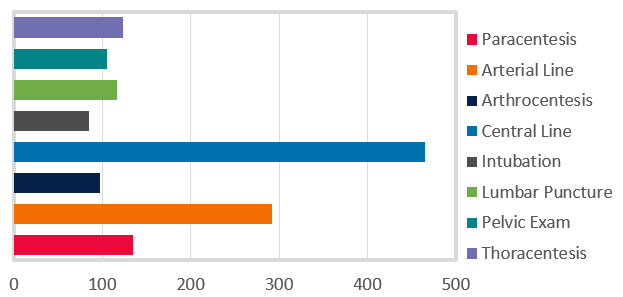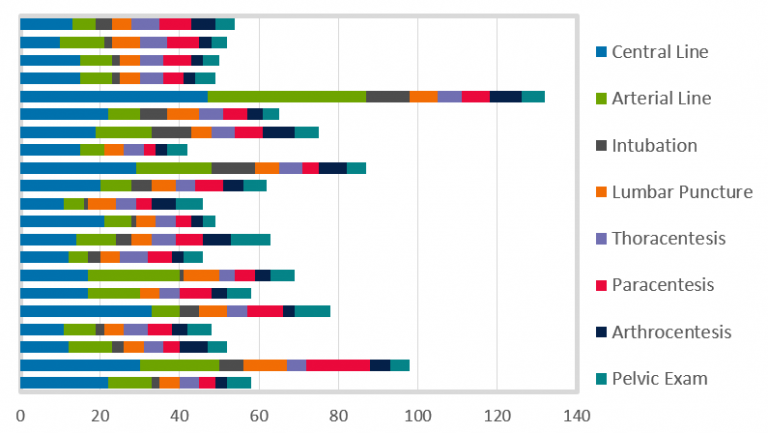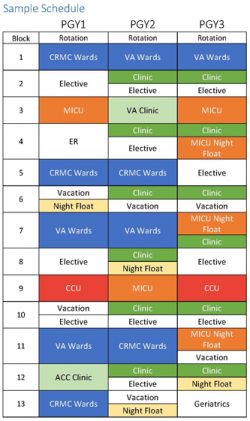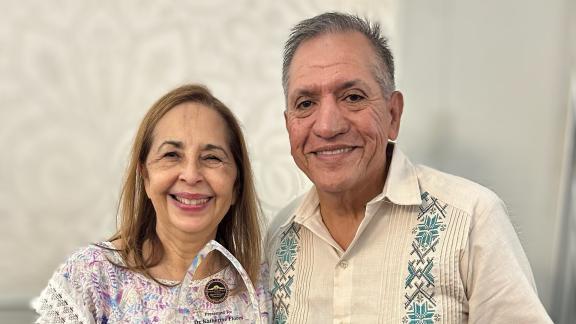The training program is integrated between Community Regional Medical Center (CRMC), the program’s main teaching hospital and the Fresno Veteran’s Affairs Central California Health Care System (VACCHCS). The curriculum is competency based with a problem based learning format. This increases the opportunity for the program’s trainees to acquire life-long learning skills. The curriculum at all facilities features strong hands-on inpatient experience in caring for patients in intensive care units and on the general medicine wards and telemetry.
The basic curriculum provides balance between acute care/critical care medicine and ambulatory medicine in diverse training settings. Residents typically spend half of their time in inpatient settings and half in subspecialty or ambulatory experiences.
Ambulatory Care
Inpatient Care
Subspecialty Care
Academic Half Day
In addition to the summer lecture series, grand rounds, M&M, and our special lecture series, we offer a weekly protected educational half-day. Residents are freed from clinical duties for a 3-hour block every week to participate in didactics. Our didactics are tailored to the level of the learner: we offer a separate half-day for interns and another for senior residents.
The typical format consists of 3 sessions:
- Session 1 – Team-based learning didactic
- Session 2 – Morning report-style case
- Session 3 – Rotating Curriculum: Board Review, Journal Club, Ethics, Wellness, Simulation, Jeopardy, QI, High-Value Cost-Conscious Care
Our traditional didactics are led by experts in ambulatory medicine, hospital medicine, and all of the medicine sub-specialties.
During the case report, residents will be led through a case with a faculty member. In a large group format, residents are taught key clinical reasoning skills and critical thinking, in addition to building knowledge about disease states.
Conferences
Evidence-Based Medicine
Procedures
We provide an unparalleled opportunity to develop procedural competencies while in residency. Our graduates complete training with a broad set of procedural skills. All resident will become privileged in the following procedures:
- Central venous catheter insertion
- Arterial catheter insertion
- Lumbar puncture
- Thoracentesis
- Paracentesis
- Arthrocentesis
- Pelvic exam
In addition to our required procedural competencies, many residents develop competencies in endotracheal intubation, incision & drainage, and punch biopsies.
In just this last academic year, our residents logged over 1400 procedures.

how do we do this?
It all starts on day one. During Intern Bootcamp you will be exposed to the fundamentals of sterile technique, ultrasound-guidance for central line insertion, and endotracheal intubation.
In 2015, we created a procedure rotation to add more opportunities and focused experience in procedural training. All interns will spend a minimum of 2-week on the rotation. The rotation includes dedicated time in one of our state of the art simulation centers, training in ultrasound techniques, and bedside procedural training.
Additionally, residents will perform various procedures on their patients while rotating on our robust critical care and wards rotations.
While the number and variety of procedures that internists perform has dwindled elsewhere over the years, the strength of our procedural training has only grown. We ensure that all of our graduates have the confidence and competence to perform all of the common medicine bedside procedures.
As an example, below is the tally or procedures logged by each of our recent grads:







